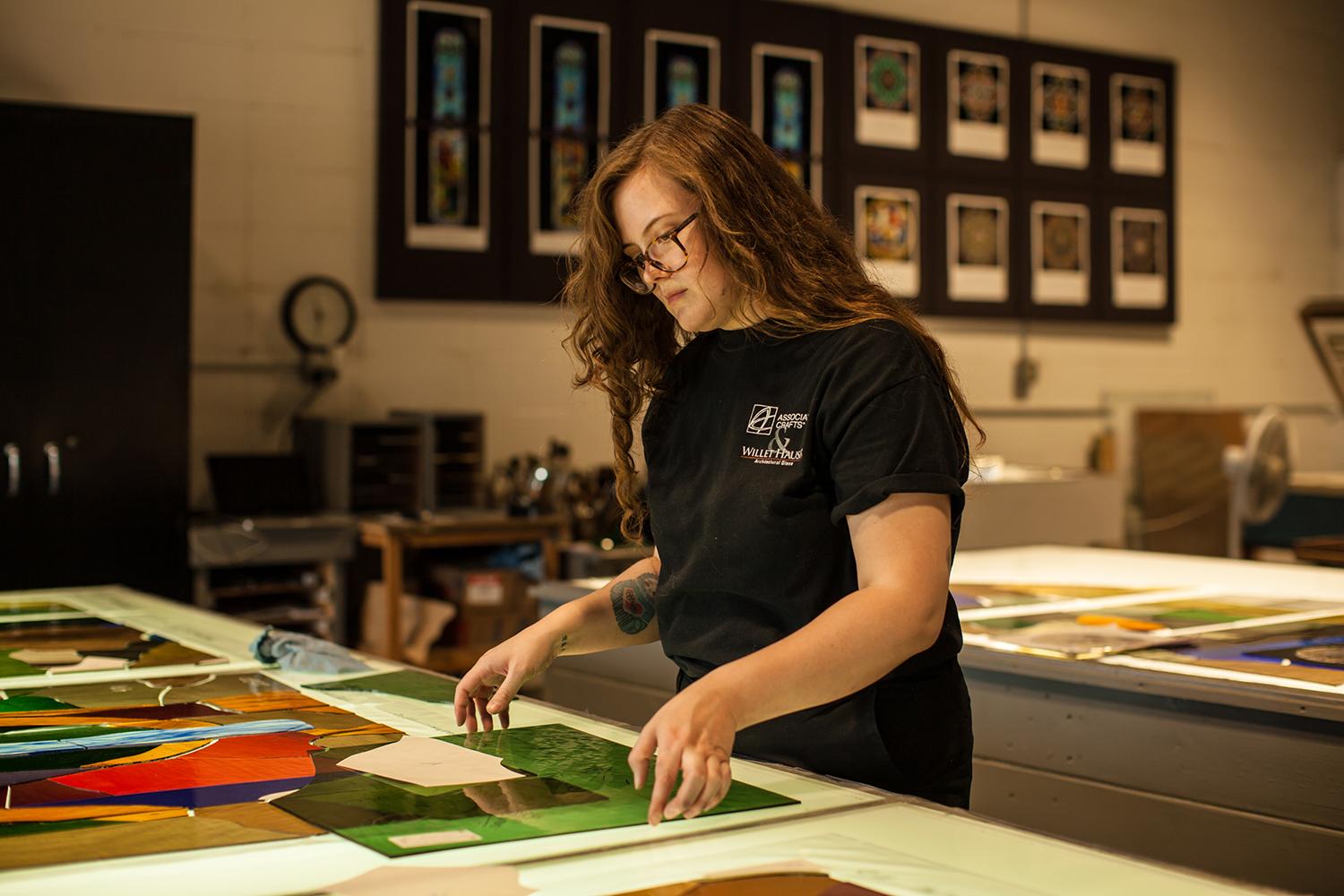Stained glass is a marriage of form and function, a style for artists who want to see their work come alive in light, and who want to continue a long tradition of craft. Is this something you’ve considered but not sure where to start? Wondered how to get your foot in the door and start learning the trade? This time on the Associated Crafts and Willet Hauser blog we’re going to give a brief rundown on what it takes to become a stained glass artist!
How to Become a Stained Glass Artist
If you’re doing any Googling on the subject you’re bound to come across a few truths on this path. One, a degree is not strictly required! Two, there is no single, set path. Some artists may choose to pursue a traditional bachelor’s degree, others may opt to go straight to hands-on experience. There’s no one right way.
Education Required
If someone wanting to become an artist in stained glass wanted to go through a traditional university experience, the most common education would be pursuing a degree in the arts or in historic preservation. Through those four years, they might learn all they need to know about another medium of fine art or the history and preservation of it. Whether you pursue a degree or not, the next step is the same, a return to a system thousands of years old. To study under a master in an apprenticeship.
Apprenticeship
An apprenticeship is a system for training new practitioners of a trade or profession, specifically through on-the-job training under a master. Often these apprenticeships will come with some form of study. In some professions, apprenticeships are the means by which a new practitioner would gain a license to practice their trade if the profession is regulated.
An apprenticeship is dynamic, their length varying across professions, cultures, roles and more. Upon completion, an apprentice will become a “journeyman,” or a competent professional in the field. While the terms and boundaries of apprentice/journeyman/master are defined by guilds and trade unions, the style of on-the-job training leading to experience and proficiency in a field is recognized and seen throughout all fields of skilled labor.
Skills Required
Stained glass artists need to perform incredibly delicate, meticulous hand-work so an eye for detail is a must. While artistic sensibilities will be a huge benefit to their work, many of the skills necessary for a stained glass artist will be in the realm of architecture, things like understanding the different varieties of glass and their best uses or how to frame, structurally support, assemble, and weatherproof their work.
Learning with Associated Crafts® & Willet Hauser®
So if an apprenticeship is a way to go how do you find one? You find a reputable studio with talented journeymen and master crafters working! Associated Crafts® & Willet Hauser® is just such a studio, proud to offer a multi-year program featuring studio, field, and design work to produce talented, professional craftsmen.
Become an Elite Artisan
Given that Associated Crafts® & Willet Hauser® has over a century of history and a reputable lineage of artisans, we have always been known as a training ground for elite artisans in stained glass. We offer an esteemed Master Apprenticeship Program in the field of stained glass. This historic program offers apprentices the opportunity to learn all aspects of the craft and art of stained glass.
Comprehensive Education
In addition to the above study areas, apprentices complete outside coursework in areas such as Drawing, Computer Arts, and History. Additionally, apprentices are expected to take part in in-house classes. Upon successful completion, individuals are given journeyman status. As a certified journeyman, you will be able to perform the tasks of the trade within the field of stained glass and to supervise apprentices.
Ready to work train and become an elite stained glass artisan? Work with our studio and make your dreams a reality.
Apply today!





